
FWA (Fixed Wireless Access) is a technology that combines fixed-line and wireless communication, specifically designed to offer broadband access services to users.
By leveraging mobile communication base stations for wireless signal coverage, and CPE installed in various locations such as homes, businesses, or factories, FWA facilitates communication and offers access to Wi-Fi or wired Ethernet networks.
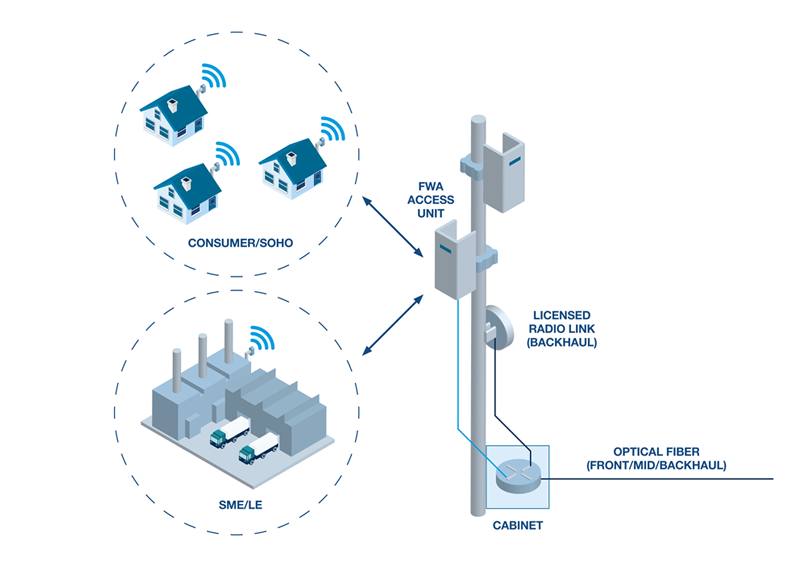
FWA Communication Architecture
The FWA communication architecture is a typical "last-mile" technology, serving a similar purpose to FTTx (Fiber To The x) technology, with the difference being that one is wireless and the other is wired.
During the 3G/4G era, FWA experienced limited user experience due to connection speed and capacity constraints, which also hindered its development.
Now, with 5G networks offering 10 to 100 times the bandwidth of 4G, FWA's service capabilities and user experience are set to improve significantly.
5G enhances FWA through the use of active antenna systems (AAU) and Massive MIMO (Multiple Input, Multiple Output) technology, which allows for better beamforming to compensate for path losses and enhance cellular network coverage.Additionally, uplink and downlink decoupling technology (enhanced uplink) meets users' bandwidth requirements for uplink.
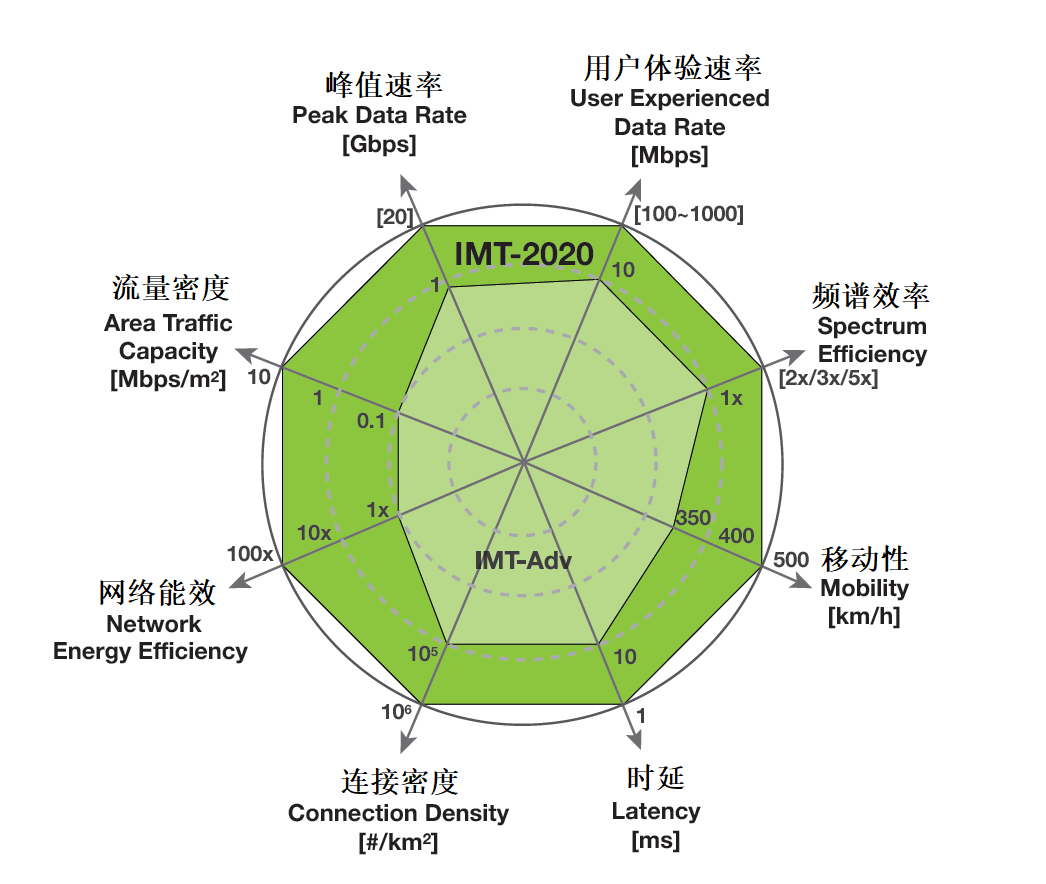
Comparing 5G (IMT-2020) and 4G (IMT-Adv)
Most current 5G networks still operate in the Sub-6 GHz frequency band. If millimeter wave (mmWave) frequencies are used, network bandwidth, capacity, and latency performance will be further improved, enabling FWA to provide network capabilities close to those of fiber optics.
5G's three major application scenarios include enhanced mobile broadband (eMBB), ultra-reliable low-latency communication (uRLLC), and massive machine-type communications (mMTC).
A significant reason for FWA's rapid development is its ability to leverage mobile broadband assets. FWA can connect homes and businesses in emerging markets and rural areas of more developed markets that lack internet access. Moreover, FWA can replace wired broadband in many cases, offering end-users an alternative choice with lower costs and faster speeds.
In addition to home users, FWA is also entering factories, campuses, mines, ports, and other scenarios, providing high-speed, low-latency network services for IoT devices in specific areas through CPE. This allows IoT devices in the area to connect to the network via Wi-Fi, reducing device connection costs and significantly improving operational efficiency.
The core function of a CPE is to convert cellular signals to Wi-Fi signals and provide additional Ethernet interfaces for devices to connect to the internet. The structural diagram of a CPE product is as follows:

CPE Product Diagram Source: Murata
The CPE's product diagram is similar to that of a mobile phone, but in terms of Wi-Fi and 5G radio frequency sections, the communication capabilities have been significantly enhanced, allowing for more devices to connect with higher bandwidth.
TP-Link's Deco X80-5G wireless router product is equipped with Qualcomm Networking Pro 1200 and Snapdragon X55 platforms, supporting both 5G mobile networks and 2.5Gbps fiber broadband connections. It provides AX6000 dual-band Wi-Fi networks and supports all Sub-6GHz frequency bands.
The internal antenna array of the CPE consists of 16 PCB antennas, with 8 groups responsible for Wi-Fi transmission and reception, and the other 8 groups for 5G network transmission and reception.
Antenna Array Source: HKEPC
The motherboard is divided into a Wi-Fi motherboard and a 5G transmission and reception board, with the two PCBs connected via a BTB interface, each with an aluminum metal heat sink.
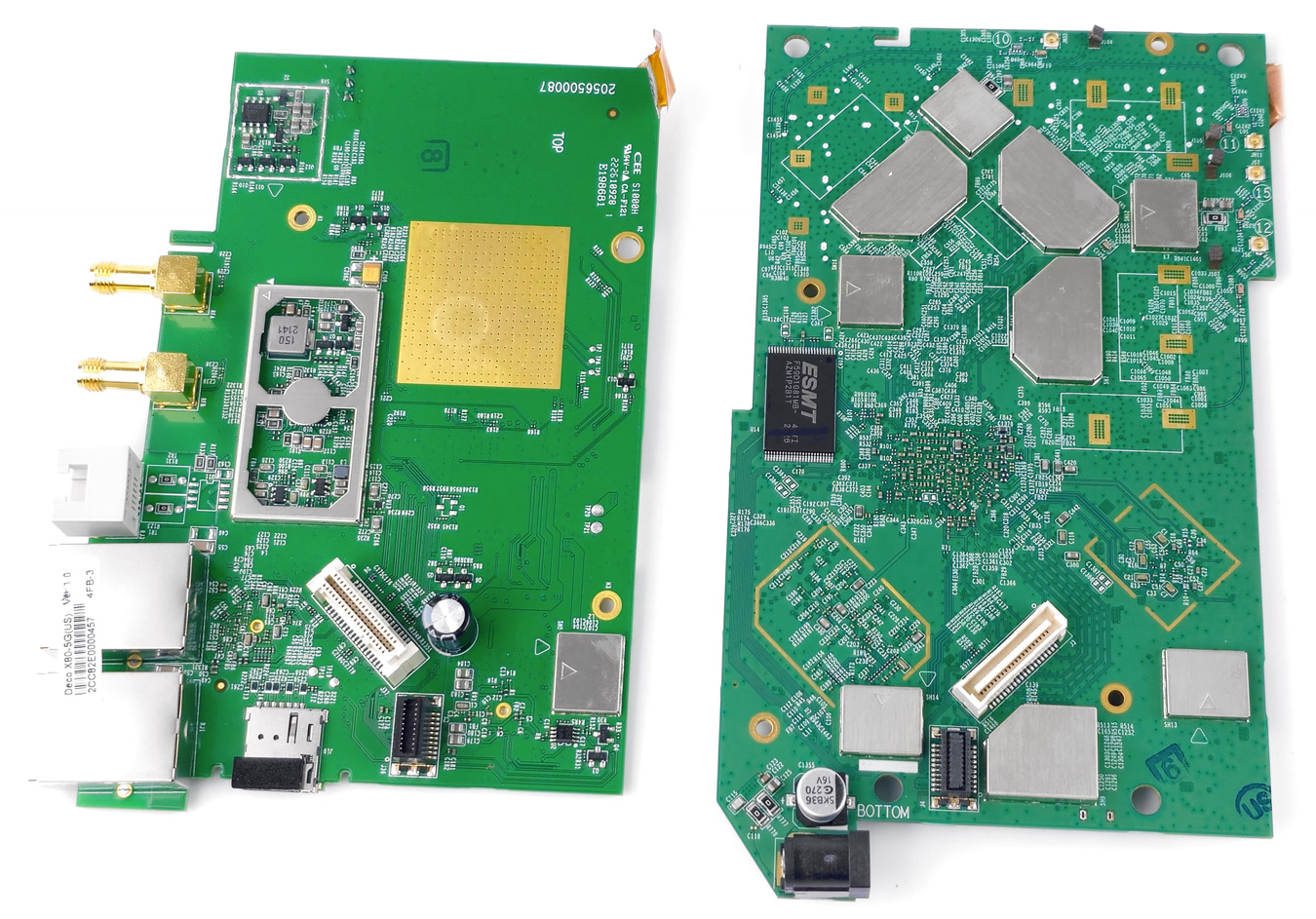
Wi-Fi Motherboard and 5G Motherboard Source: HKEPC
In terms of the 5G modem, the Quectel RM502Q-EA 5G Sub-6GHz module is used, developed based on the Qualcomm Snapdragon X55 (SDX55) platform, supporting both NSA and SA networking modes. It offers download speeds of up to 5.0Gbps and upload speeds of 900Mbps, as well as additional features such as DFOTA and VoLTE.

Quectel RM502Q 5G Module Source: HKEPC

Quectel RM502Q 5G Module Opened Source: HKEPC
Based on the Snapdragon X55 Platform Source: HKEPC
For the main processor, the Qualcomm Networking Pro 1200 solution is used, featuring the Qualcomm IPQ8074A SoC chip with four ARM Cortex A53 processors, a maximum frequency of 2.2GHz, and support for up to 12 independent streaming channels and a network bandwidth of up to 6Gbps.

Quectel RM502Q 5G Module Opened
Based on the Snapdragon X55 Platform Source: HKEPC
In terms of Wi-Fi chips, two Qualcomm QCN5054 and one Qualcomm QCN5024 Wi-Fi chips are installed. The former provides a 5GHz band supporting 8x8 MU-MIMO configurations, while the latter offers a 2.4GHz band with 4x4 MU-MIMO, totaling 12 streaming channels and providing a wireless network bandwidth of 6000Mbps.

Qualcomm QCN5024, QCN5054 Wi-Fi Chips
Source: HKEPC
For signal gain, the 5GHz and 2.4GHz bands are equipped with eight Qorvo QPF4588 and four Skyworks SKY85340-11 Wi-Fi front-end modules, both integrating common design features of integrated FEMs such as signal boosters and low-noise amplifiers (LNA).
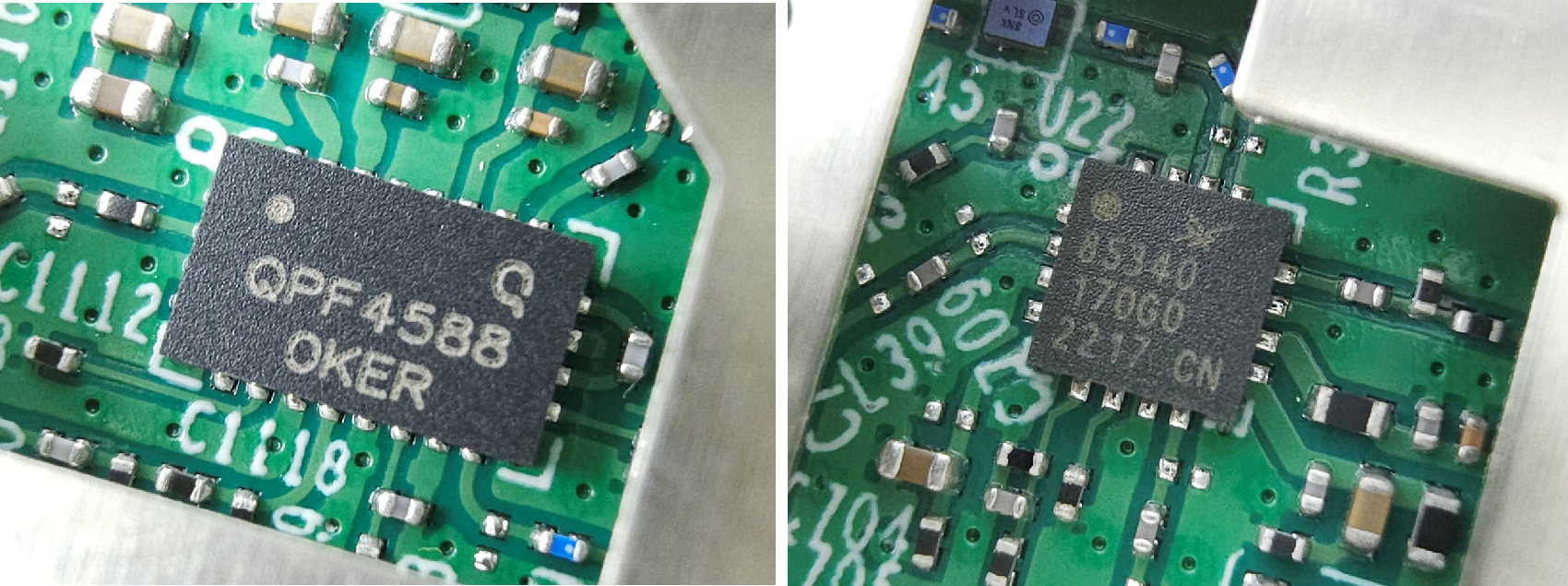
Qorvo QPF4588 and Skyworks SKY85340-11 Source: HKEPC
In terms of wired networking, the router is equipped with Qualcomm QCA8081 and Qualcomm AR8033-AL1A Ethernet PHY chips, providing 2.5GbE and 1GbE interfaces.

Qualcomm QCA8081 and AR8033-AL1A Source: HKEPC
In terms of storage, the device is equipped with two ESMT M15T4G16256A-DEBG2G 2Gb DDR3L DRAMs, with a memory speed of 1,866Mbps, providing 512MB of system memory. Additionally, there is an ESMT F59D1G81MB-45TI 1G-bit flash memory, providing 128MB of firmware storage space.
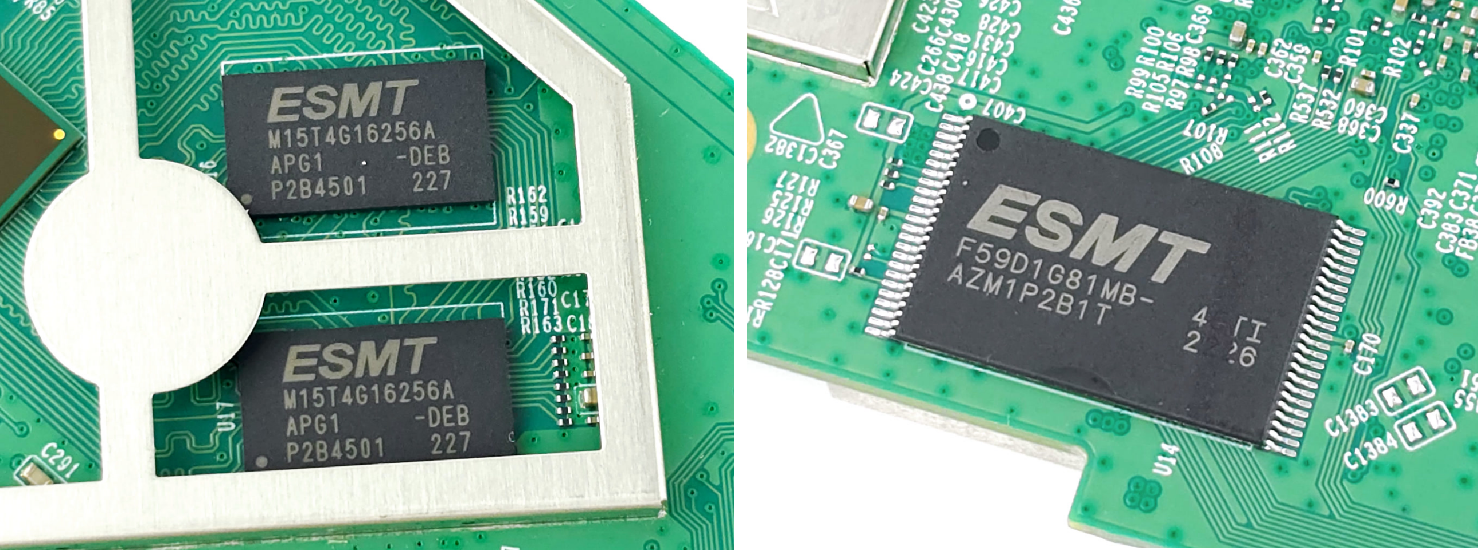
ESMT M15T4G16256A-DEBG2G 2Gb DDR3L ESMT F59D1G81MB-45TI 1G-bit NAND
Source: HKEPC
According to the latest data from the Leichtman Research Group, FWA services accounted for 90% of the net increase in all broadband customers in the United States in 2022. T-Mobile and Verizon's FWA products and services gained a total of 3.17 million users in 2022, far more than the 730,000 net new customers recorded in 2021.
Ericsson estimates that in terms of adoption rates, FWA is currently the second-largest 5G application after mobile broadband. In 2022, global FWA service providers' revenue was around 2727billion,with an expected increase to 67 billion by 2028, at a compound annual growth rate of 16%.
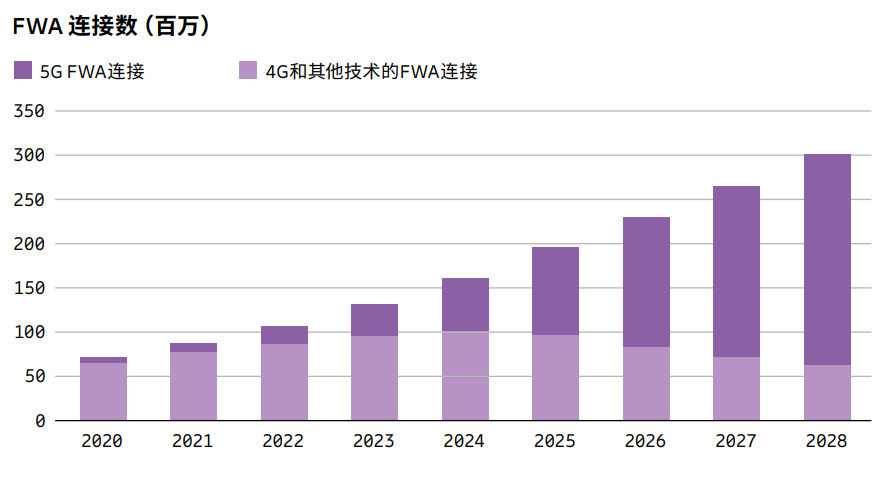
FWA Connection Statistics and Forecast Source: Ericsson
GSMA statistics show that as of the third quarter of 2022, 84 operators in 44 markets have launched 5G FWA, with another 18 operators announcing plans to launch 5G FWA in the near future. In various markets such as Austria, Australia, the UK, Germany, and Italy, the 5G FWA household penetration rate is expected to reach 10% or higher by 2025.
Article reference sources:
文: Angus Wong / 評測中心。
市场规模500亿,FWA为什么会突然爆发?-鲜枣课堂